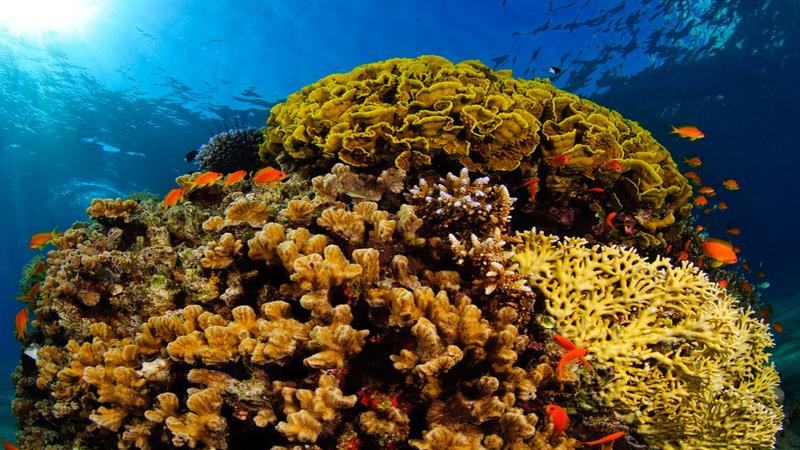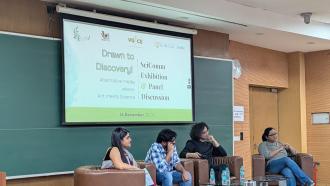
The Indian monsoon, which sees much variability, has been crucial to the country's economy. It affects 42% of employed individuals in the country — farmers and those working in the agricultural sector. At times, a 'normal' monsoon brings enough rain to keep everyone happy, but sometimes, there is either a deluge or a drought. With recent meteorological advances, these variations can be predicted and recorded. But, how do we go back hundreds of years in time to understand the historical variability in Indian monsoon? Corals in the Red Sea may have answers, says a study by American researchers.
The study, published in the journal Geophysical Research Letters, reconstructs the intensity of the South Asian monsoon in the past 250 years. The researchers have based this reconstruction on data obtained from porites, a kind of corals in the Red Sea, which act as natural records of past monsoons.
The circulation winds in the Indian Ocean, responsible for South Asian monsoon, also causes dust storms over the Red Sea. These winds bring the element barium into the sea from the Tokar gap in Sudan. As the corals in the sea grow, the barium in the water then gets deposited in their skeleton.
"The coral skeleton is made of calcium carbonate. Trace metals, such as strontium and barium, can substitute for calcium. The ratio of strontium and calcium in the corals is inversely correlated with sea surface temperature, while the ratio of barium and calcium acts as a proxy for silt deposits from rivers," explains Dr Konrad Hughen. He is a scientist at the Woods Hole Oceanographic Institution(WHOI), USA, and an author of the current study.
Corals can also serve as proxies for measurements of pollution levels. Trace metals, like lead and copper, which are found in water bodies due to industrial pollution, get incorporated into the skeleton. Isotopes of nitrogen can also tell us if water bodies are being adversely affected by fertilizer runoff, resulting in extensive algal growth.

Researchers drilling into coral samples. Photo credits: Whitney Bernstein (WHOI)
The researchers of the study sampled two species of corals, belonging to the genus Porites (P. lobata and P. lutea), along the Saudi Arabian coastline of the Red Sea for three years. These corals were selected as they are known to be over 250 years of age. The corals were then extracted underwater using a hydraulic drill.
"Coral coring, or extraction for sample collection, is quite challenging. The drilling equipment is heavy and awkward to use, especially while underwater in a scuba-diving suit. If there's a current, it can be challenging to stand upright holding the drill. Often, we tie a line to ourselves, so the current doesn't sweep us away," shares Dr Hughen, who was directly involved in the coral coring process.
The coral cores obtained displayed distinguishable bands that form every year, much like the rings of a tree. These bands grow linearly by about 1–1.5 cm per year. The coral skeleton was then divided into high-resolution and low-resolution samples. The high-resolution samples defined the barium and calcium concentrations for a biweekly period, while the low-resolution samples defined it for a yearly period. These powdered coral core samples were then cleaned and prepared for plasma mass spectroscopy, a technique that can detect trace elements. The ratio of barium and calcium in these samples represented the amount of dust in the Red Sea.
The dust measurements were then tested against Indian sea level pressure records and Northern Arabian sea surface temperature records. The strength of the low-pressure system, together with the sea surface temperature, are linked to moisture transport and precipitation. Hence, the barium and calcium concentrations serve as a proxy for the wind strength of the South Asian monsoon, say the researchers.
"This is one of the fascinating things about the monsoon system. This large atmospheric circulation system has far-reaching effects, controlling the generation of dust storms over the Red Sea," remarks Dr Sean Bryan. He is a professor at the Colorado State University, USA, and an author of the current study.
The study found a multi-centurial increase and a multi-decadal decrease in variability of monsoon intensity. In other words, the monsoon season has been getting more intense over the previous centuries. However, the variability of the monsoon has been decreasing over the past decades. While previous studies had shown a strengthening of the monsoon over the last several hundred years, this is the first study to observe monsoon variability over the decades.
"Rainfall data averaged across India shows no long-term trend, and in fact, decreases sharply in the last 50 years. However, our wind strength data, together with other instrumental and proxy data, show a long-term increase. These observations may indicate a decoupling of wind and rain in the same summer monsoon system, but more work will be required to confirm that this is true," signs off Dr Hughen.
Additional reporting by Renuka Kulkarni.
This article has been run past the researchers, whose work is covered, to ensure accuracy.






